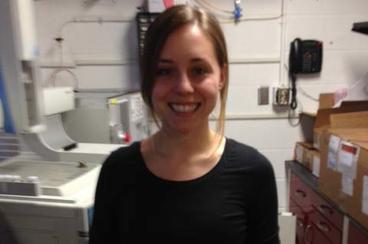Education:
2008-2012 UW-Eau Claire Biochemistry/Molecular Biology BS
2012-2015 University of Minnesota Applied Plant Sciences MS
2014-Present University of Minnesota Plant Biological Sciences PhD
Research topic: Regulation of adventitious root formation by auxin and light
Description:
Adventitious roots, which are defined as roots originating from non-root tissues such as shoots, are vital structures for water and nutrient acquisition as well as response to environmental changes in many major crops. Adventitious root formation is also critical for production of horticultural crops that are vegetatively propagated by rooting stem or leaf cuttings. A vigorous root system is necessary for survival and health of these vegetatively propagated plants; however, some species and genotypes can be especially difficult to root, making adventitious root formation the limiting factor to their productivity. Low rates of adventitious rooting are an especially common problem in woody plants, one such example being hybrid hazelnut (Corylus americana x C. avellana). The plant hormone auxin is a key regulator of adventitious root initiation, but the tissue-specific changes in auxin metabolism leading to adventitious root formation are still largely unknown. Etiolated (dark-grown) seedlings of the reference species Arabidopsis thaliana grown in the dark for several days can form adventitious roots upon transfer to light, and this light-induced rooting provides an interesting assay for studying genetic and biochemical factors involved in adventitious root initiation without needing to apply exogenous auxin or wounding the plant.
My research is focused on:
1.) Characterizing the photo-response regulating light-induced adventitious root formation
2.) Analyzing the tissue-specific hormonal changes stimulating light-induced adventitious root formation
3.) Improving propagation efficiency in hybrid hazelnut by characterizing its adventitious rooting response to light and the accompanying hormonal changes
